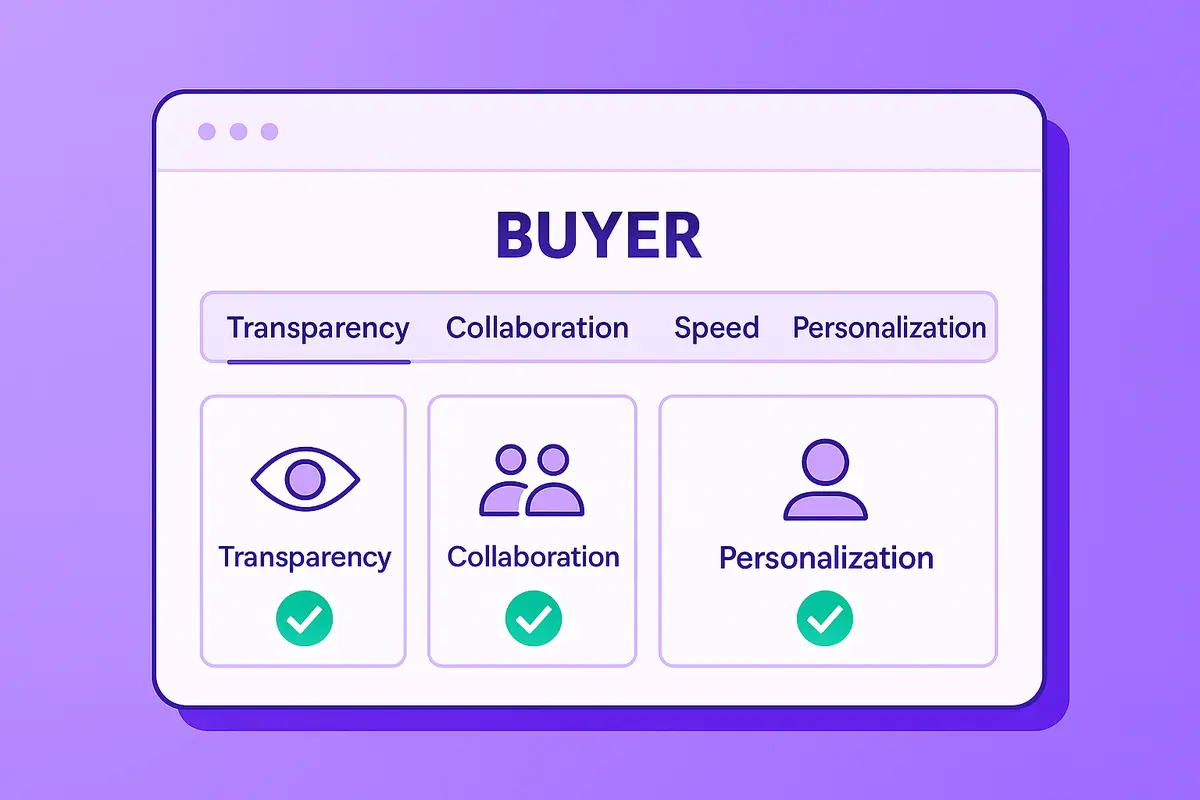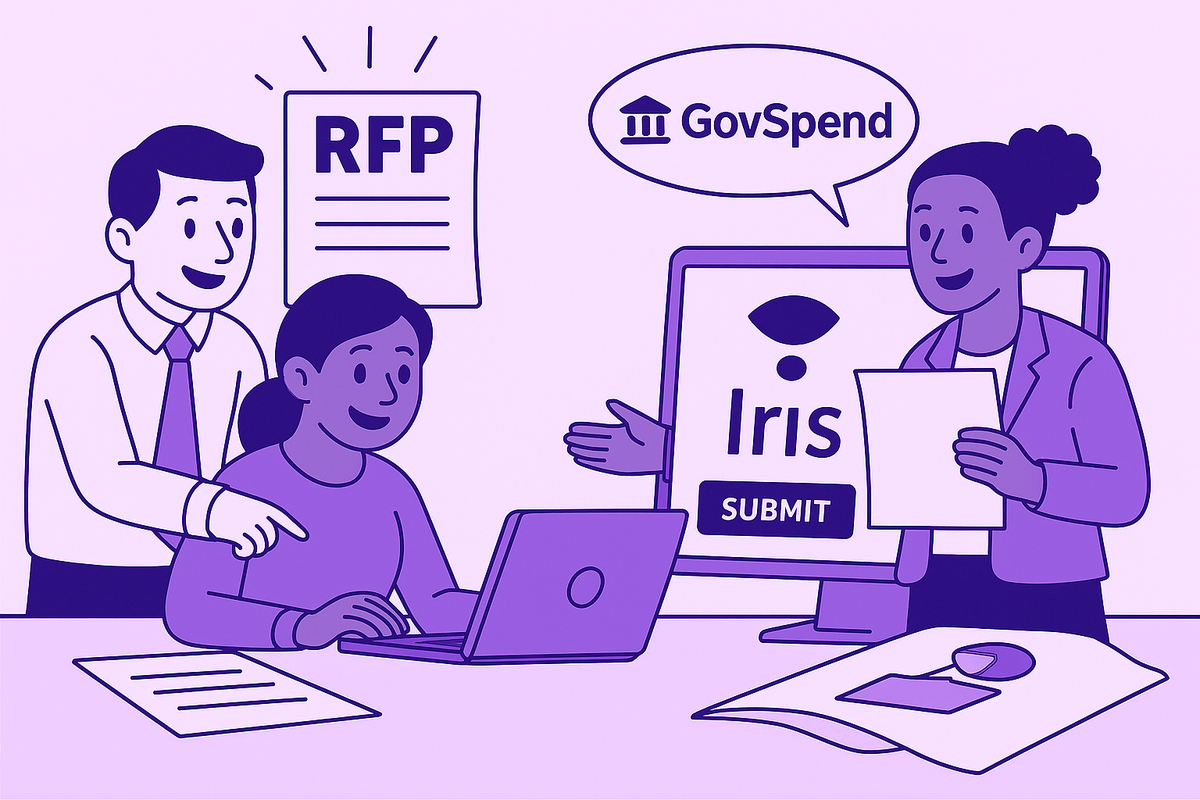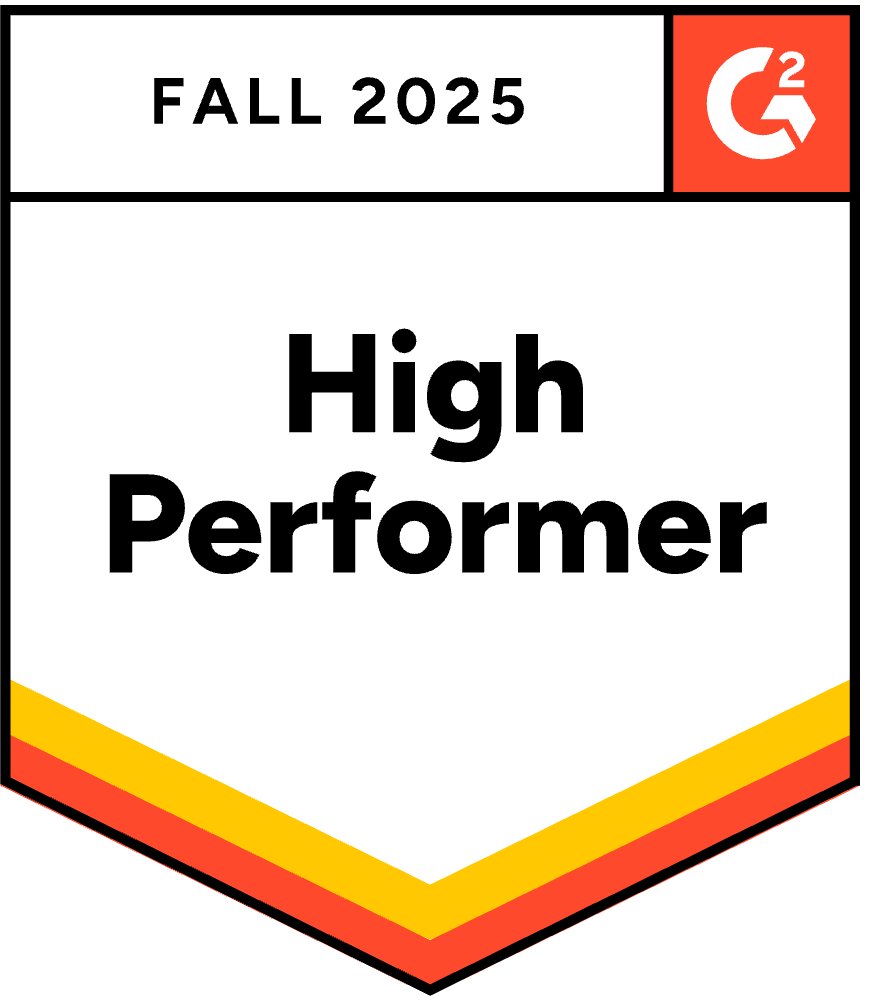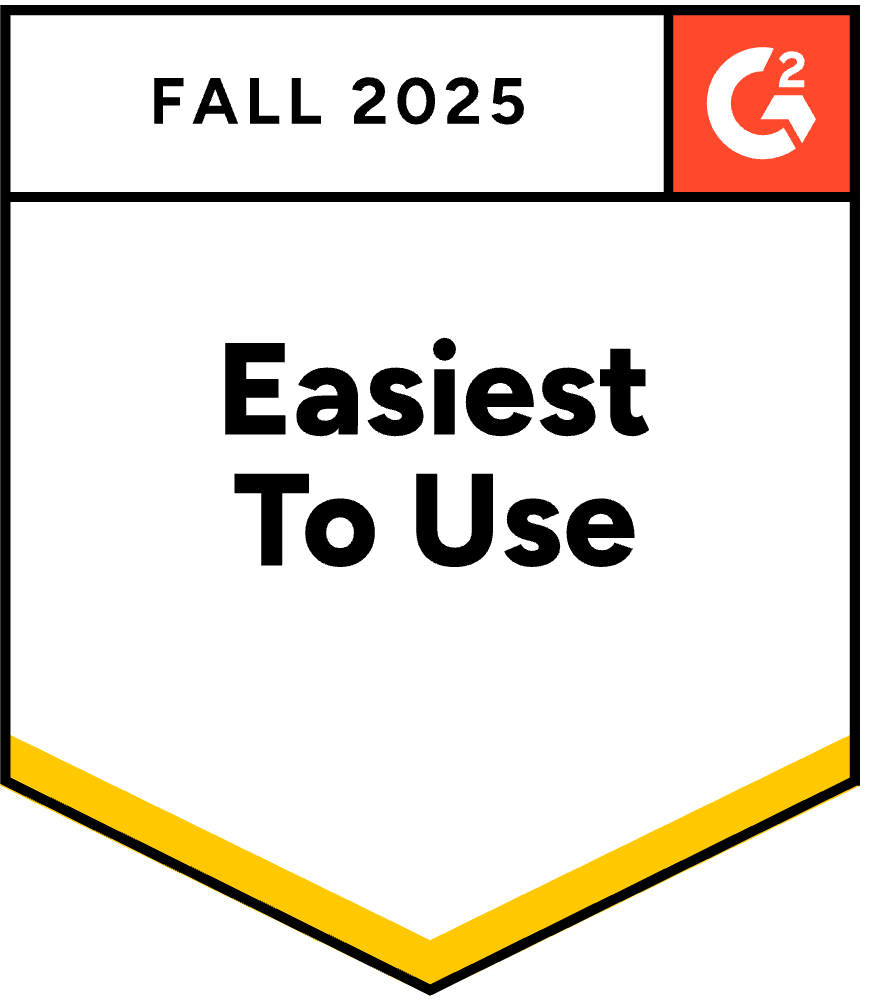6 RFP Sales Cycle Tracking Errors Costing You Deals
June 12, 2025
By
Evie Secilmis

It all started with Question 47. A single copy-paste error from an old document, and just like that, the deal was lost. The real danger in the RFP process isn't a tough competitor—it's an outdated answer hiding in plain sight. When your team's best knowledge is scattered across disconnected systems, you're at a major disadvantage. A lack of centralized rfp sales cycle tracking means no audit trail and no way to guarantee accuracy. The right sales rfp software can transform this chaos into a secure, efficient process, protecting your business and building client trust.
An AE was wrapping up a security questionnaire. Their SME was on PTO. Legal was buried. The deadline was tomorrow.
They searched the Q&A bank.
Found an answer labeled “Encryption Protocols – Approved.”
Copied. Pasted. Sent it out.
Two months later, during onboarding, the client asked about the feature.
It didn’t exist.
Now there’s churn risk.
It wasn’t user error. It was system failure.
The answer used to be right—but no one knew it had changed.
And the static Q&A bank didn’t say otherwise.
That’s why Iris was built differently.
Understanding the RFP Landscape
What is a Request for Proposal (RFP)?
Let's start with the basics. An RFP, or Request for Proposal, is a formal document a company sends out when it needs to buy a product or service. Think of it as their way of saying, “We have a problem to solve or a project to complete, and we're looking for the best partner to help us.” It’s a structured way for them to outline their specific needs, requirements, and expectations. This ensures that every vendor who responds is on the same page, allowing the buyer to compare apples to apples when making their final decision. It’s the official start of a high-stakes conversation between a buyer and potential sellers.
The RFP Process: A Buyer's Perspective
So, why do companies go through the trouble of creating an RFP? It usually happens when they need something complex or critical for their business—like new software, specialized equipment, or outsourcing a major function like IT or payroll. They're looking for expert help or a new supplier for a vital part of their operations. The RFP process gives them a formal framework to source and evaluate potential partners methodically. It’s their roadmap for finding the right solution without leaving important details to chance, ensuring they make a well-informed investment for their company's future.
Defining Needs and Creating a Vendor Scorecard
Before a single RFP is sent, the buyer's team does a lot of internal homework. They have to get crystal clear on their exact needs and lock down a budget. This involves sorting out their 'must-haves' from their 'nice-to-haves' and identifying any absolute deal-breakers. To keep the evaluation process objective, many create a vendor scorecard. This tool helps them rate every proposal against the same weighted criteria—like technical capabilities, pricing structure, implementation support, and company stability. It ensures a fair and consistent comparison across all submissions, making the final choice a data-driven decision, not just a gut feeling.
From NDA to Final Contract
Once they’ve picked a winner, the process isn't over. The final, and arguably most critical, phase is finalizing the legal paperwork. This means getting the contract language just right, covering everything from confidentiality and insurance to compliance with industry regulations and how any future claims will be handled. This step is essential for protecting both the buyer and the vendor, setting the foundation for a successful and secure partnership. It’s the last checkpoint before the real work begins and a smooth relationship can be established.
The Hidden Costs of a Manual RFP Sales Cycle
Now, let's flip the script and look at this from the seller's side. While the buyer’s process is structured, the manual response process for a sales team can be a huge resource drain. According to research on RFP automation, teams can spend a staggering 40 to 61 hours responding to a single RFP. That's more than a full work week dedicated to one document. This time sink is made worse by the fact that around 80% of the questions are repeats or slight variations of questions you’ve already answered hundreds of times before. It’s a frustrating cycle of searching, copying, pasting, and just hoping the information is still accurate.
This repetitive, manual work doesn't just burn out your team; it introduces significant risk. It’s exactly how the mistake with Question 47 happened in the story we started with—an outdated answer slipping through the cracks of a manual process. When your best people are bogged down with administrative tasks instead of focusing on strategy and building relationships, you lose momentum. The time spent hunting for answers is time not spent selling. This inefficiency directly impacts your team's capacity and can slow your entire sales cycle, making it harder to hit your numbers. It's a hidden cost that quietly eats away at your bottom line and your team's morale, and it's precisely the problem that modern AI-powered platforms are built to solve.
1. Why Static Q&A Can't Keep Up With Your Sales Cycle
Most RFP tools treat content like a filing cabinet.
Drop in your answers. Label them well. Search when needed.
That assumes two things:
- The next question will be the same
- The answer won’t change
Neither is true.
Buyers ask nuanced questions. Legal phrasing shifts. Products evolve.
A static bank assumes answers are evergreen. But in complex sales? Nothing is.
Platforms like Iris’s AI RFP tools adapt.
They surface responses based on structure, context, audience, and recency—not just keywords. No outdated copy-paste. Just trusted, relevant suggestions.
2. Are Your Canned Answers Hurting Your Win Rate?
Clean search results feel comforting—until they aren’t.
Without visibility into:
- Who last used the answer
- When it was updated
- Whether it fits this buyer…
…your team is left guessing.
Iris flags stale content before it’s reused. It tags every answer with usage data, source history, and context—so your team doesn’t just find answers. They trust them.
3. One-Size-Fits-All Answers Don't Win RFPs
Your legal reviewer wants detail.
Your business buyer wants simplicity.
Procurement wants consistency.
Static answers don’t flex. Iris does.
Iris adapts tone, format, and depth based on who’s reviewing.
AI suggestions match the persona—IT, legal, finance, or business—and adjust accordingly. No more last-minute rewrites or wrong-tone submissions.
4. When Reusing Answers Becomes a Liability
RFP software should reduce manual work—not reintroduce it as reformatting, editing, or post-submission fire drills.
Iris learns what works.
From win-rate data to feedback loops, it evolves with your team—so reused content gets smarter, not staler.
The Problem with Disorganized Information
When your best answers are scattered across old proposals, shared drives, and your SMEs’ inboxes, you’re working with a handicap. Many businesses get stuck in manual RFP processes that create a breeding ground for disorganized information. This isn't just messy; it's a direct threat to your revenue. It leads to missed deadlines when you can't find what you need, poor-quality answers cobbled together at the last minute, and the constant risk of sending outdated information to a prospect. The system fails because it relies on human memory and perfect organization—two things that rarely survive a high-pressure sales cycle.
How Much Time Are You Really Spending?
Let's talk about the clock. Sales teams spend an average of 40-61 hours responding to a single RFP. That’s an entire work week dedicated to one document, and most of that time isn't spent on strategy. It's lost to the grind of hunting for answers, chasing down experts for approvals, and wrestling with spreadsheets. This administrative drag creates fatigue, slows your team down, and opens the door for burnout and costly errors. The goal is to respond to Requests for Proposals faster and more accurately, giving your team the space to focus on winning the deal—not just completing the document.
5. Why Your Remote Team Needs Dynamic Sales RFP Software
Your SME’s on PTO. Your proposal lead is in another time zone.
And the RFP still needs to go out.
Static banks can’t assign owners, notify stakeholders, or track status.
Iris can.
Assign roles. Route ownership. Trigger reviews. All inside the same platform.
No email threads. No “final_final_v3” doc. Just clear, audit-ready collaboration.
Aligning Your RFP Process with Your Sales Goals
Your sales team spends months building a relationship, understanding a client’s needs, and demonstrating value. Then, the RFP lands, and the process shifts from a conversation to a checklist. Suddenly, the focus isn't on the solution but on compliance, and the momentum stalls. For the RFP process to be a sales asset instead of a hurdle, your sales and proposal teams need to collaborate closely. When the proposal team understands the 'why' behind the deal—the client's core problems and the relationship dynamics—they can craft responses that reinforce the value your sales team has already established, turning a formal document into a powerful closing tool.
Aligning these functions means treating every RFP as a strategic sales document, not just a questionnaire. The goal is to prove you're the right partner, which requires a deep understanding of the buyer's needs and the competitive landscape. This is where technology transforms the workflow. Instead of manually searching for answers, RFP automation software can generate accurate, context-aware first drafts in minutes. This frees up your team from the tedious copy-and-paste cycle and gives them the bandwidth to focus on what really matters: tailoring the proposal to resonate with the specific challenges and goals of the client, ensuring every answer sells.
The key is a unified system where sales insights and proposal content live together. When your sales team can easily flag key client concerns and your proposal writers have access to a dynamic, AI-powered knowledge base, the entire process becomes more efficient. Modern AI deal desk solutions do more than just store answers; they learn from past wins, flag outdated information, and help customize responses for different audiences. By leveraging these tools, your team can respond to RFPs faster and with higher quality, turning a traditionally reactive process into a proactive engine for closing deals and hitting your sales targets.
6. What Winning Teams Use Instead of Static Q&A
Still using a content library that needs constant cleanup?
Corelight used to spend 60 to 90 hours per RFP—even for straightforward questionnaires—because every answer had to be dug up, revalidated, and manually formatted.
Since switching to Iris, they’ve reduced that time to just 3 hours.
No Q&A library. No scrambling.
“We have reduced our response times to RFIs and RFPs drastically and no longer have to manage a pesky Q&A Library.” — AJ LaForty, Director of Federal Sales Engineering, Corelight
Check out the full Corelight case study.
TL;DR: A Search Bar Won’t Save You
Static Q&A banks were built to help teams “find stuff.”
But RFPs aren’t just about finding answers.
They’re about earning trust—at scale.
If your tool isn’t:
✅ Context-aware
✅ Audience-adaptive
✅ Up-to-date
✅ AI-assisted
✅ Workflow-integrated
…it’s not built for modern sales.
That’s why Iris doesn’t use a Q&A bank.
We built something better.
→ Want to see Iris in action? Book a demo and see how modern teams respond smarter—even when their SMEs are offline.
How AI-Powered RFP Software Works
At its core, AI-powered RFP software uses smart technology to make responding to proposals much faster and easier. Instead of just acting as a search bar for old answers, it intelligently analyzes the questions in a new RFP to understand their context and requirements. The AI then taps into a central knowledge base—a curated library of your company's best and most accurate information—to generate a first draft of the response. This isn't a simple copy-and-paste job. The software crafts answers that are relevant to the specific question, saving your team from the tedious work of starting from scratch and letting them focus on strategy and customization.
Integrating with Your Existing Tech Stack
One of the biggest headaches in the RFP process is hunting down information scattered across different platforms. Your best security answer might be in a Google Doc, your latest product specs in a Slack channel, and your legal disclaimers in a PDF. Modern RFP automation software solves this by integrating directly with the tools your team already uses. It brings all your information together from sources like Google Drive, Slack, and other sales tools, creating a single, reliable source of truth. This ensures every response is consistent and, more importantly, current. Iris even proactively identifies outdated information across these connected systems, so you never send a client a promise you can no longer keep.
Smarter Collaboration for Your Sales Team
Email chains and endless document versions are where good proposals go to die. When your subject matter experts, legal team, and sales reps are all working in different places, it’s nearly impossible to keep track of progress. Unlike static Q&A banks that can’t assign owners or notify stakeholders, a dynamic platform brings everyone together. You can assign specific questions to team members, route answers for approval, and trigger reviews all within the same system. This creates a clear, auditable workflow, eliminating confusion and ensuring everyone knows their role. No more wondering if you’re working on the right version—just seamless, efficient teamwork.
The Importance of Human Oversight
While AI is a powerful assistant, it’s not meant to replace your team's expertise. The goal is to eliminate repetitive tasks, not strategic thinking. Think of the AI as a junior team member who prepares the initial draft. It’s still essential for your experts to review and refine the answers to ensure they are high-quality and perfectly tailored to the buyer's needs. A great system supports this by building trust. For instance, Iris flags stale content before it’s reused and tags every answer with usage data and source history. This gives your team the context they need to not just find answers, but to trust them completely before sending them to a potential customer.
Key Business Goals You Can Improve
The most immediate impact you’ll see is a dramatic reduction in the time it takes to complete a proposal. Sales teams often spend an average of 40-61 hours responding to a single RFP, with most of that time spent on repetitive, low-value tasks like searching for information and formatting documents. By automating the initial draft, AI-powered software hands back dozens of hours to your team. This newfound efficiency allows them to move faster, respond to more opportunities, and dedicate their energy to what really matters: building relationships and closing deals. Instead of getting bogged down in administrative work, they can focus on crafting a winning strategy for each proposal.
Beyond speed, AI improves the overall quality and consistency of your responses. When your team is pulling answers from a centralized and verified knowledge base, you eliminate the risk of using outdated or incorrect information. This ensures every proposal that goes out the door is accurate, professional, and aligned with your brand messaging. You can even reuse successful answers from past wins, building on what works to create even stronger proposals over time. This consistency not only strengthens your brand's reputation but also reduces the compliance risks associated with inaccurate information, giving you a solid foundation for every bid you submit.
Ultimately, a faster and more accurate process leads to higher win rates. When your team can produce top-tier proposals in a fraction of the time, they can pursue more opportunities without sacrificing quality. This increase in deal volume, combined with more compelling and tailored responses, directly impacts your bottom line. By streamlining the entire workflow—from initial draft to final submission—you give your team a significant competitive advantage. They can respond more thoughtfully, meet tight deadlines with ease, and present a polished, professional front that earns the trust of potential clients and helps you win more business.
Frequently Asked Questions
How is AI-powered software different from just using a shared drive or a basic Q&A library? Think of a shared drive as a digital filing cabinet. You can store information, but it's up to you to find it, verify it's still correct, and hope you grabbed the right version. AI-powered software acts more like an intelligent assistant. It doesn't just store your information; it understands it. It actively pulls from all your connected systems to generate accurate first drafts, flags content that might be outdated, and learns from your past wins to suggest the best possible answers for each new proposal.
The post says Iris doesn't use a Q&A bank. What does it use instead? Instead of a static library where answers go to become stale, Iris uses a dynamic, central knowledge base. This system connects to the tools your team already uses, like Google Drive or Slack, to create a single source of truth that stays current. It understands the context of each question and pulls information based on relevance, recency, and past performance, ensuring the answers it suggests are always the most accurate and effective for the specific opportunity you're working on.
Will my team still need to review the answers the AI generates? Absolutely, and that’s by design. The goal of the AI is to handle the heavy lifting—the 80% of the work that involves finding and assembling standard information. This frees up your experts to focus on the critical 20%: tailoring the proposal, adding strategic insights, and ensuring the tone and content perfectly match the client's needs. The AI provides a high-quality, accurate first draft, allowing your team to spend their time on strategy, not searching for answers.
How can a tool like this help a remote or distributed team stay aligned? When your team is spread out, email chains and version control can become a nightmare. A dynamic platform brings everyone into one workspace. You can assign questions to specific subject matter experts, track progress in real-time, and manage approvals without ever leaving the platform. It creates a clear, auditable workflow so everyone knows exactly what they need to do and when, ensuring the process runs smoothly even when your team is in different time zones.
How does speeding up the RFP process actually lead to winning more deals? It’s about more than just speed; it’s about capacity and quality. When you cut the time spent on a single RFP from 40 hours down to just a few, your team can respond to more opportunities without burning out. More importantly, the time you save isn't just idle—it's time that can be reinvested into customizing each proposal. This allows your team to move beyond generic answers and craft compelling, client-focused responses that stand out from the competition and directly address the buyer's biggest concerns.
Key Takeaways
- Static Q&A banks are a liability: Relying on a simple search bar for proposals means you're constantly at risk of using outdated, one-size-fits-all answers. This leads to costly errors and lost deals because the content isn't tailored or trustworthy.
- Manual RFP work is a strategy killer: The 40+ hours your team spends on a single RFP isn't just a time sink; it's a direct hit to your sales momentum. Every minute spent hunting for old answers is a minute not spent building relationships and closing deals.
- A dynamic system builds trust and wins deals: The right RFP software does more than find information—it verifies it. By providing context-aware suggestions, integrating with your tools, and flagging stale content, it gives your team the confidence to submit accurate, high-quality proposals faster.
Related Articles
Share this post
Link copied!



















